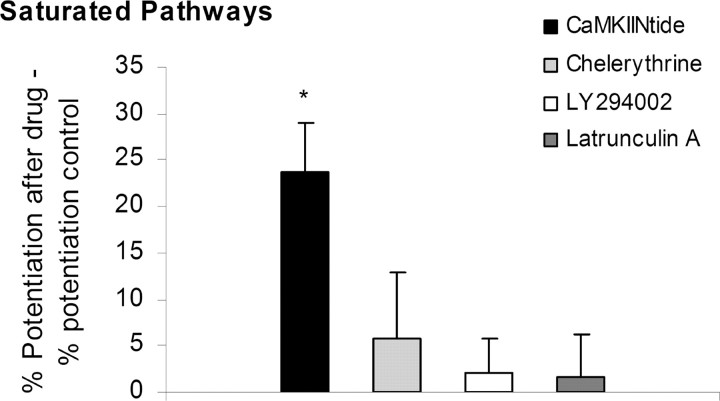Figure 6.
PKC, PI3-K, or F-actin inhibition does not reverse saturated LTP. The same protocol was used as for CaMKII inhibitor (see Fig. 5A) with chelerythrine (an inhibitor of PKC), LY294002 (an inhibitor of PI3-K), and latrunculin A (an inhibitor of actin polymerization). Each inhibitor reduced the maintained potentiation during application [chelerythrine (8 μm), 48.6 ± 3.5% (n = 8); LY294002 (45 μm), 17.9 ± 6.2% (n = 5); latrunculin A (2 μm), 21.2 ± 4.7% (n = 5); data not shown]. After inhibitor washout, reversal of saturation was tested by applying a series of tetani. Subtracting the percentage potentiation in controls from the percentage potentiation after drug application gives the percentage additional LTP attributable to drug. Only Ant-CaMKIINtide (5 μm) allowed significant additional LTP.

